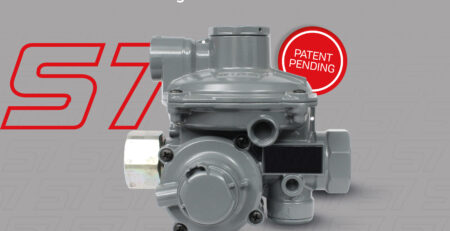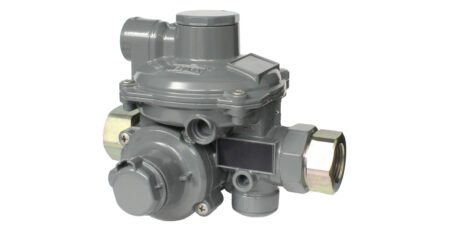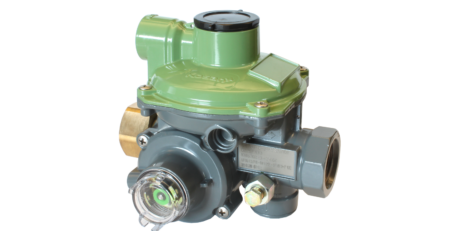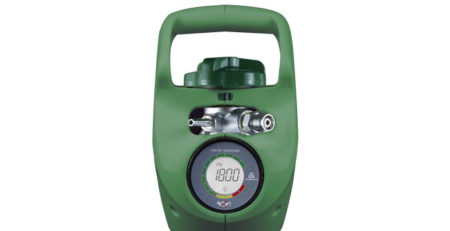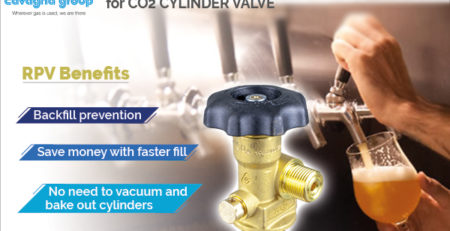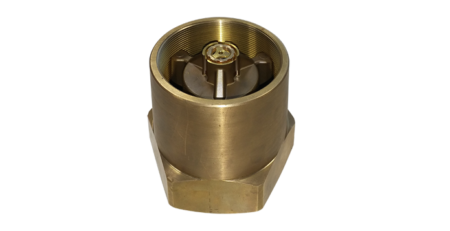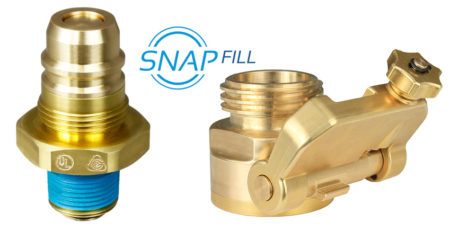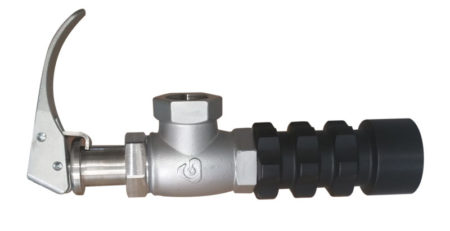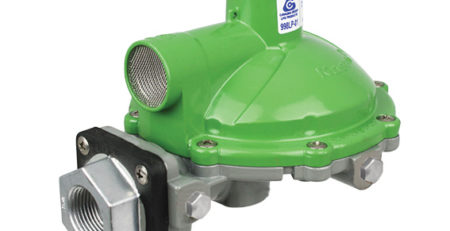Types of Self Operated Regulators
Self-operated gas regulators have been in use since the early 1800s on gas street lights in England. Since then, the design has changed and features have been added, but fundamentally all self-operated regulators share three core components: loading, throttling, and sensing. While pressure-loaded and pilot-operated regulators offer several advantages, nothing is as simple, economical, or reliable as a self-operated regulator.
Today, self-operated regulators can be classified into 4 categories:
- Direct Acting Regulators
Direct acting, or direct linkage regulators, connect all 3 components in a one-to-one ratio. In many designs, inlet pressure pushes these regulators closed, providing tight shut off. However this design is difficult to scale, so this design is typically used for very small, high pressure applications like pilot regulators or industrial regulators.
- Lever Style Regulators
Lever style regulators use a mechanical lever to amplify force, allowing for a smaller actuator on larger regulators. Lever style regulators also allow for high-capacity Internal Relief Valves (IRV) to protect the system. Favored in North America for their reliability and low cost, they do require careful selection to ensure the orifice can meet customer demand under all conditions, the IRV can provide safety for the system, and that the regulator will remain accurate as system pressures fluctuate.
- Balanced Trim Regulators
Balanced trim regulators use a diaphragm or piston assembly to minimize inlet pressure sensitivity that unbalanced Direct Acting or Lever Style regulators are subject to. This means that one, large orifice size can be used for all inlet pressures. This simplifies sizing and selection, but often leads to oversized regulators during the summer when demand is the lowest.
- Dual-Stage Regulators
Dual-stage regulators utilize two independent stages of pressure reduction. These compact designs also include an integral slam shut valve, which is available with Over Pressure Shut Off (OPSO) and Under Pressure Shut Off (UPSO) protection. Figure 1 below shows the operation in 2 dimensions:
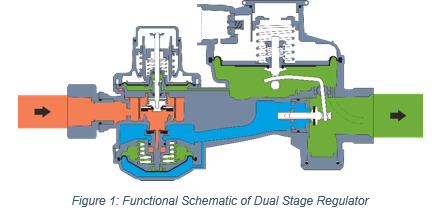
While dual-stage regulators may appear complex, they are really just 3 simple devices in one body. This compact design offers a wide range of advantages:
-
- Safe for Every Installation: The integral SSV improves safety and negates the need for an internal relief valve. This allows the use of a Safety Diaphragm for an emission-free design, or the Limited IRV can be used to eliminate vent piping while preventing nuisance trips.
- Stable Delivery Pressure: Reducing pressure in 2 stages ensures a consistent pressure drop across the orifice, eliminating inlet pressure sensitivity. This means stable delivery pressure for every system, in every season without the risk of oversizing.
- Simplified Sizing, Selection & Inventory: A single orifice size can be used for all inlet pressures up to 125 psig. Once the body connections and safeties are selected, that regulator can be used on virtually every distribution system.
- Increased Reliability: With an easy to clean or replace inlet filter, debris won’t impact the internal components. Additionally, the dual-stage pressure reduction splits the workload, reducing wear and tear on critical components.
Conclusion
Dual-stage regulators are the standard solution in Europe and in many countries around the world. They provide stable delivery pressure, simplify selection, improve reliability, ensure safe installation and minimize emissions. This allows them to be used on any installation with inlet pressures up to 125 psig, while providing a level of performance and safety that can’t be matched by other regulator designs.
Mesura has been producing dual stage regulators for nearly 70 years. For more information, please contact Cavagna North America: Contact us
This article provides general information about pressure regulation. The words and other contents provided are not intended and should be construed as warranties, guarantees, or technical advice. If a reader wants assistance to select the proper product for their application, please contact Cavagna North America.


